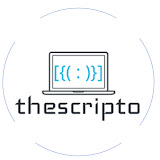In today’s competitive tech landscape, the ability to build scalable web applications and analyze data effectively has become a must-have skill. Web development and data science are two of the fastest-growing fields in the industry, and scripting languages like JavaScript, Python, R, and MATLAB play an instrumental role in bridging the gap between these domains.
If you’re looking to future-proof your career, this blog will cover:
- Why scripting languages dominate in web development and data science.
- The most relevant tools, frameworks, and libraries you should learn in 2025.
- Hands-on project ideas to help you build an industry-grade portfolio.
Why Scripting Languages Are the Backbone of Modern Development
Scripting languages stand out due to their simplicity, versatility, and community support. Whether it’s building interactive websites or handling massive datasets, scripting languages offer a lightweight and flexible way to execute tasks without the need for compiling the code.
Advantages of Scripting Languages:
- Ease of Learning: Beginner-friendly syntax.
- Cross-Platform Compatibility: Code once, deploy anywhere.
- Integration Ready: Compatible with a variety of APIs and libraries.
- Cost-Effective Development: Open-source ecosystems reduce development costs.
Let’s dive deeper into the tools and trends that will shape the industry in 2025.
1. JavaScript: The Undisputed King of Web Development
JavaScript continues to reign as the top choice for front-end and back-end development, thanks to its speed and flexibility.
Must-Learn Frameworks in 2025:
- React.js: For building user interfaces with reusable components.
- Next.js: The ultimate framework for server-side rendering and SEO-friendly web apps.
- Node.js: For creating robust back-end systems.
Pro Tip: Integrate JavaScript with tools like D3.js for data visualization or TensorFlow.js for machine learning models in the browser.
2. Python: The Data Scientist’s Best Friend
Python remains the gold standard for data analysis and machine learning, with libraries that streamline everything from data wrangling to predictive modeling.
Libraries to Learn:
- Pandas: For data manipulation and cleaning.
- Scikit-learn: A powerful library for machine learning models.
- Flask and Django: Web frameworks for creating full-stack applications.
- Plotly: For creating interactive data visualizations.
Industry Trend: Python’s PyScript allows you to run Python directly in web browsers, making it a game-changer for integrating Python into web apps.
3. R: The Data Scientist’s Visual Playground
R is a top choice for statisticians and data scientists who need quick, elegant visualizations.
What’s Trending in R:
- ggplot2: A must-learn for creating publication-quality graphs.
- Shiny: For building interactive web apps without leaving R.
- Caret: For streamlining machine learning workflows.
Pro Tip: Use R alongside Python for end-to-end data science workflows.
4. MATLAB: The Power of Engineering and Visualization
MATLAB’s precision in numerical computation makes it essential for engineers and data scientists.
Key Features in MATLAB:
- App Designer: Build professional applications without needing deep coding experience.
- Simulink: For simulating dynamic systems.
- Machine Learning Toolbox: Train and deploy machine learning models effortlessly.
Hands-On Project Ideas to Build Your Portfolio
To stand out in the job market, you need more than theoretical knowledge; practical experience is key. Here are some projects that integrate web development and data science:
1. Interactive COVID-19 Dashboard
Use Python and Plotly to create a real-time dashboard that visualizes COVID-19 data. Deploy it using Flask or Streamlit for web access.
2. E-Commerce Recommendation Engine
Develop a product recommendation system using Scikit-learn and integrate it into a React.js front end.
3. Stock Price Prediction App
Build a web app using MATLAB or Python, where users can input a stock ticker to see predictions based on historical data.
4. Sentiment Analysis Tool
Leverage R and Shiny to create an app that analyzes sentiment from user-submitted text or tweets.
Key Takeaways to Kickstart Your Learning
- Start small: Build foundational skills in one scripting language before moving on to others.
- Focus on frameworks: Learning libraries and frameworks like React.js and Pandas will speed up your workflow.
- Create a portfolio: Use GitHub to showcase your projects to potential employers.
By mastering these scripting languages and applying them to real-world projects, you’ll position yourself as a strong candidate for high-paying roles in web development and data science.
Ready to Start Your Journey?
At The Scripto, we’re dedicated to helping you master the art of scripting with hands-on tutorials, practical projects, and industry insights. Subscribe to our YouTube channel for weekly content that will accelerate your learning and make you job-ready!
Stay tuned for more tutorials and updates!

